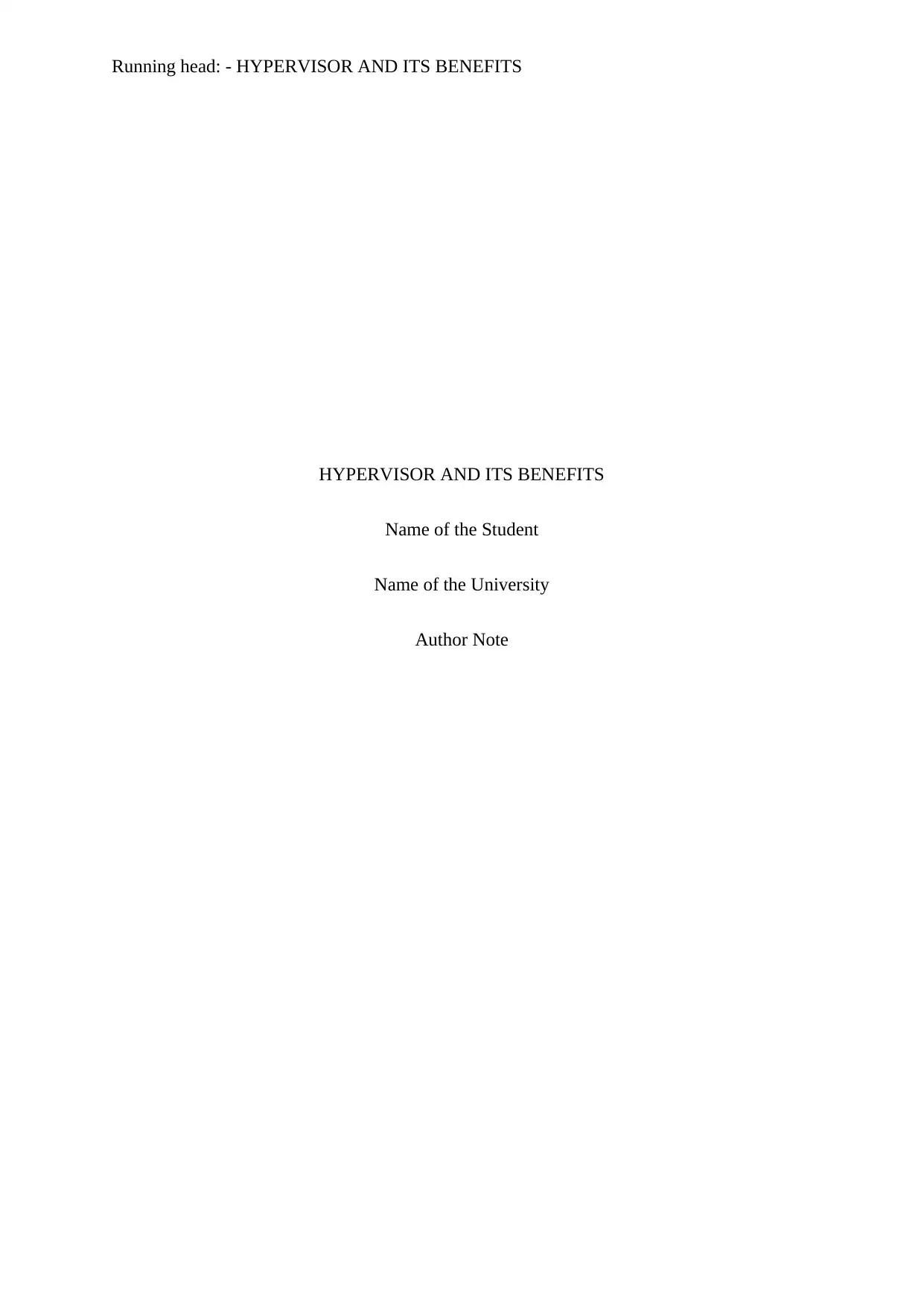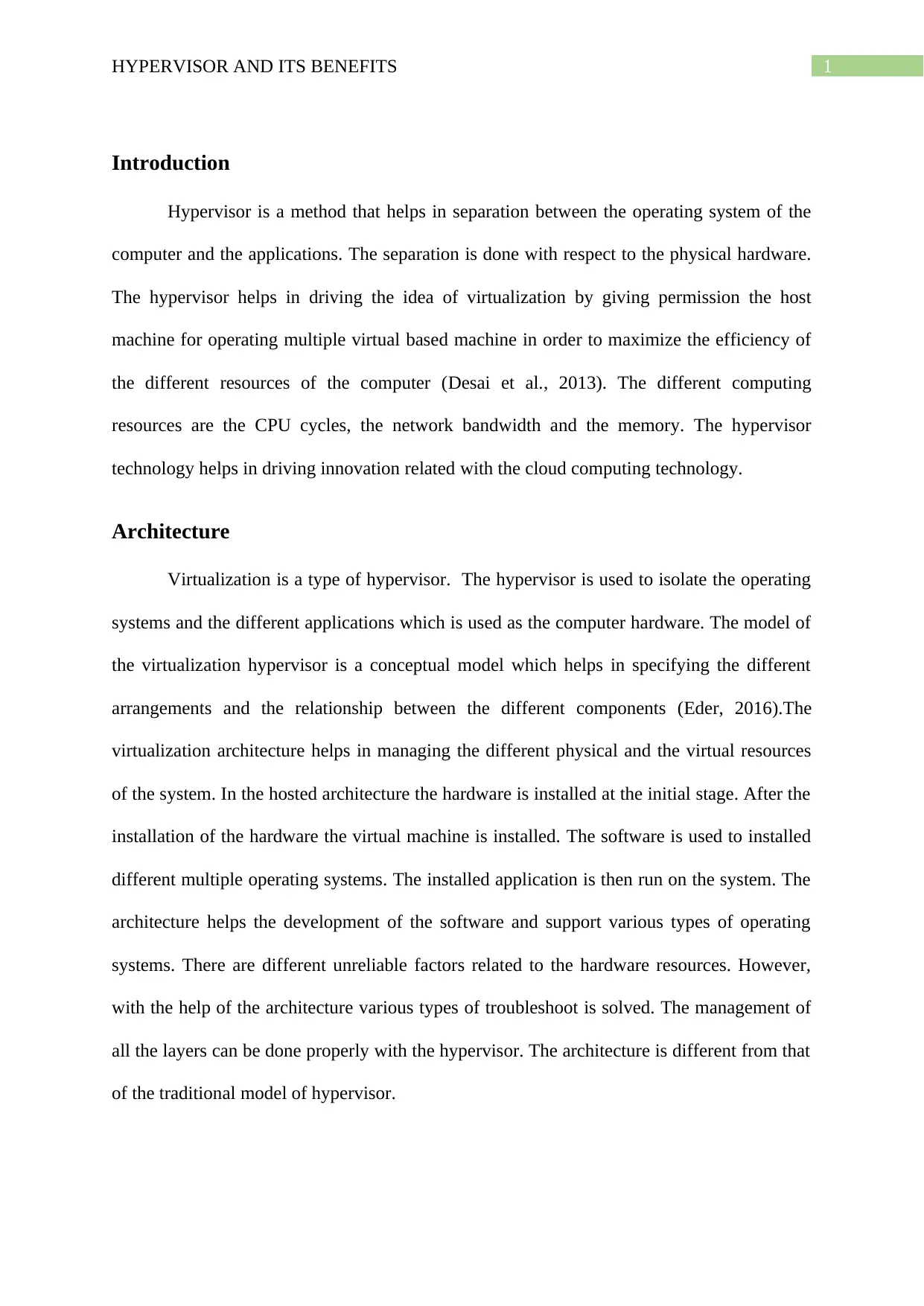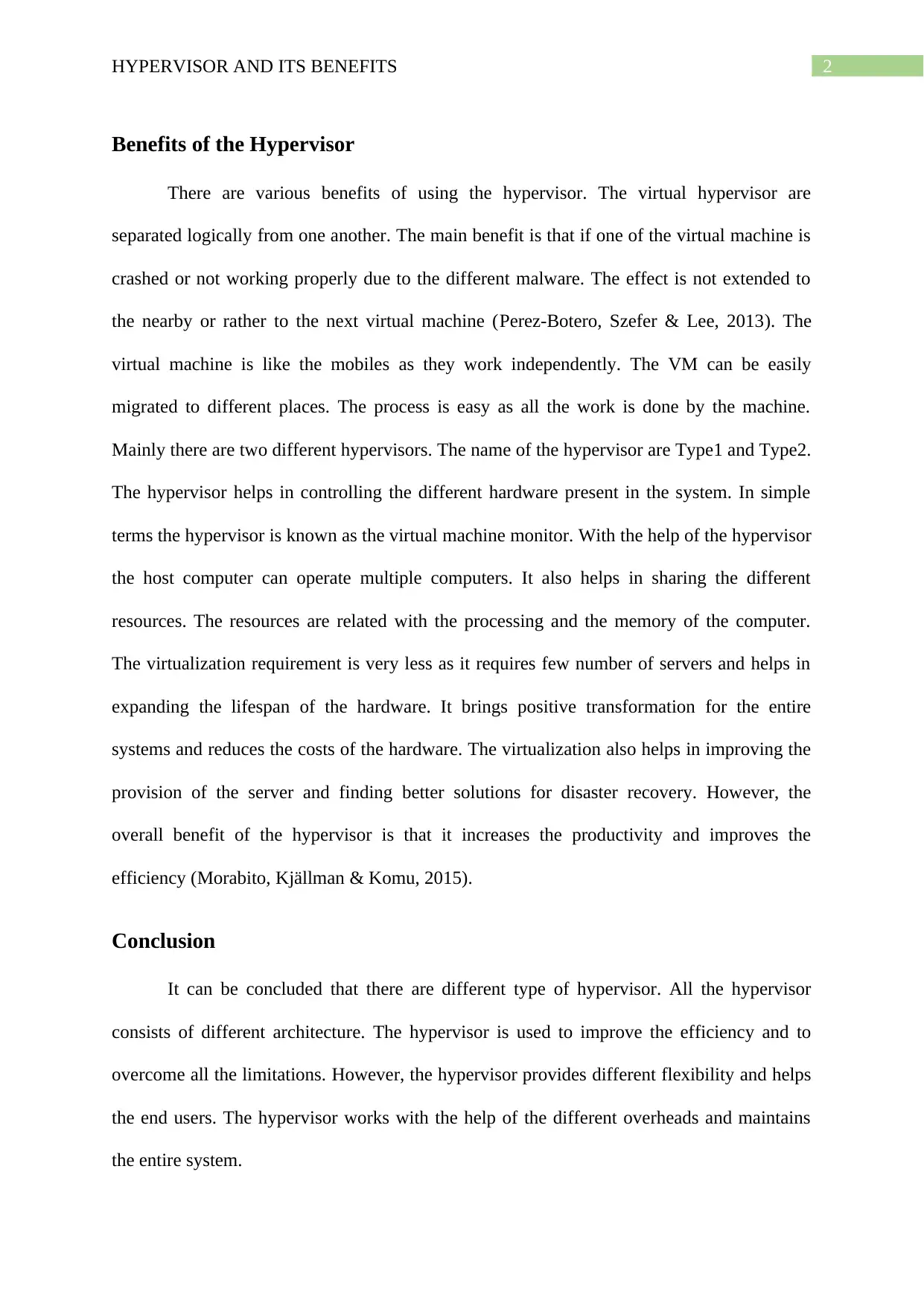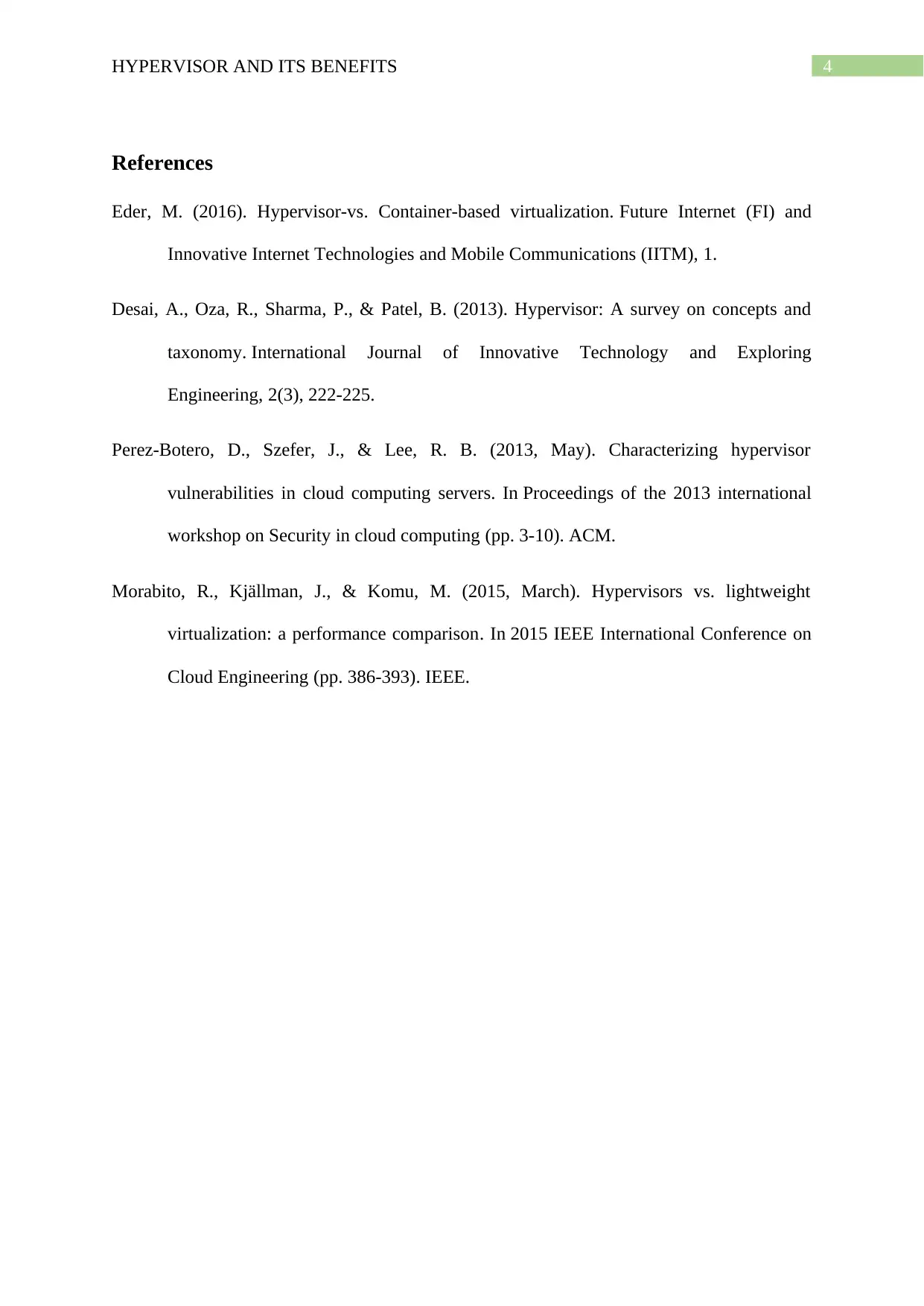Hypervisor and Its Benefits: A Detailed Analysis of Its Architecture
VerifiedAdded on 2022/12/02
|5
|826
|58
Report
AI Summary
This report provides an overview of hypervisors, detailing their architecture and benefits in the context of virtualization. It explains how hypervisors facilitate the separation between the operating system and hardware, enabling the efficient use of resources such as CPU cycles, network bandwidth, and memory. The report discusses the architecture of virtualization, including hosted and bare-metal approaches, and highlights the advantages of hypervisors such as improved resource management, isolation of virtual machines, and enhanced flexibility. It also touches upon the different types of hypervisors (Type 1 and Type 2) and their role in controlling hardware resources. The report concludes by emphasizing the overall benefits of hypervisors in increasing productivity, improving efficiency, and reducing hardware costs, making them crucial for cloud computing and modern IT infrastructure.
1 out of 5











![[object Object]](/_next/static/media/star-bottom.7253800d.svg)